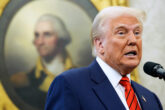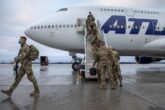February 25, 2019
The New Afghanistan Will Be Built on Ceasefire Solutions and Taliban Tradeoffs
The new mantra for Afghanistan: trust, but verify, and watch your back.
To his credit, U.S. envoy Zalmay Khalilzad has made remarkable progress in recent peace talks with the Taliban. It appears the latter group has now renounced any willingness to tolerate extremists from ISIS or Al Qaeda on Afghan territory under any future government in which it may have a key role. The United States has correspondingly indicated a willingness to downsize its military presence over time, and perhaps ultimately end it altogether, when conditions are right. We hope credible assurances on human rights are addressed, too.
But as Ambassador Khalilzad has himself underscored, there is no deal on anything until everything is agreed—and right now, we are still closer to the starting line than the finish line in negotiations to end this interminable conflict. As we approach the eighteen-year mark, it is already America’s longest war; for Afghans, it arguably dates back to the Soviet invasion of Afghanistan forty years ago. But even if Afghans, Americans, and other NATO/foreign forces are tired of fighting, reaching compromise will be excruciatingly hard. The government of Afghanistan has not even been brought into the peace talks yet, because the Taliban refuse even to properly recognize President Ashraf Ghani, whom they see as a U.S.-installed puppet, or even the Afghan constitution, which they also see as American-imposed. Until negotiations occur Taliban and Ghani, it is hard to get too enthused about the prospects for peace.
If and when such talks do begin, a crucial element will be security—and the future of the nation’s security forces. Indeed, this may be the single hardest and most central issue of all to a durable peace. It is not credulous to believe that either Ghani’s government or the Taliban would trust each other fully even if a peace deal could be written and signed. Both would have to expect ruses and betrayal by the other. Thus, any deal would need to go beyond Ronald Reagan’s famous “trust, but verify” mantra, and be based on the logic of “trust, but verify, and watch your back.” A peace deal would have to allow some elements of protection for key leaders and partisans on both sides of the fight. That in turn requires a realistic way to preserve the military capabilities of the two sides for a time, rather than naively believing they can somehow meld together seamlessly and safely.
Read the full article in The National Interest.
More from CNAS
-
Afghanistan: Why Does Trump Want to Retake Bagram Air Base?
Lisa Curtis, senior fellow and program director at the Center for a New American Security joined Deutsche Welle to discuss President Trump's comments on the U.S. regaining con...
By Lisa Curtis
-
A Failure to Plan: Examining the Biden Administration’s Preparation for the Afghanistan Withdrawal
Afghanistan, Iraq, and Vietnam. One failure is a horrible accident; two failures are a tragic coincidence; three failures are a disturbing trend that shows the U.S. government...
By Christopher D. Kolenda
-
Against All Odds
Eighteen months after taking power, the Taliban is intensifying its repression of Afghan civil society and cracking down on the rights and freedoms of all Afghans, especially ...
By Lisa Curtis, Annie Pforzheimer & Jan Mohammad Jahid
-
To Help Afghanistan, Engage Its Political Opposition
The effort to help Afghans shape a better alternative should begin now....
By Richard Fontaine & Lisa Curtis




